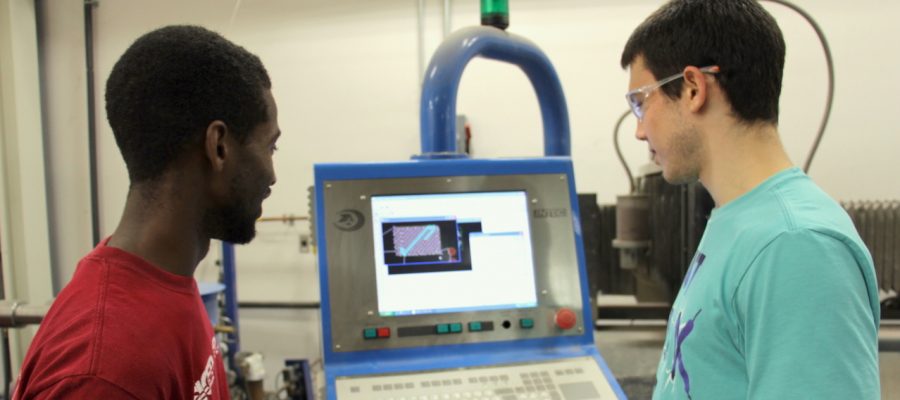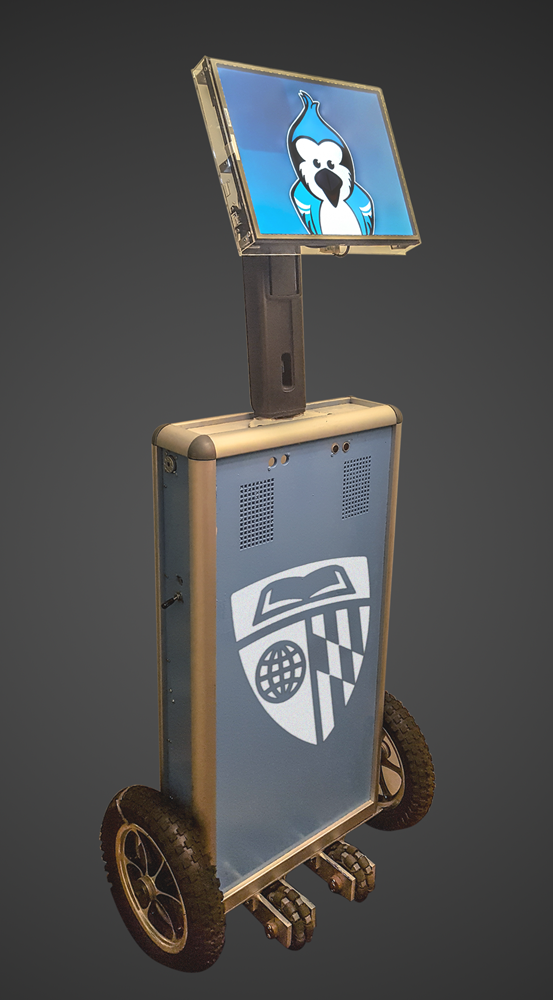RoboJay


Campus tours are one of the most effective ways to showcase JHU to potential students. With assistance from the Office of Admissions, “RoboJay” will guide tour groups, starting from its charging station in Mason Hall, through the beginning portion of the JHU Undergraduate Tour, focusing on the robots that live in buildings along the way. RoboJay will also take part in the engineering tours and various special events. Once RoboJay’s portion of the tour is over, it will say goodbye to the tour group and return to Mason Hall. Once at the door, RoboJay will use a Pixy Smart Vision Sensor to detect the automatic door-opener on the wall beside the door. It will then raise its door-opener arm, align it with the button, and move forward to press the button. RoboJay will then move out of the way as the doors open before proceeding to its charging station.
The hardware architecture of this autonomous, semi-interactive tour-guide robot is made for durability and aesthetic pleasure. The software architecture integrates navigation, obstacle avoidance, localization, and some user interaction, including realistic emulation of emotions and basic speech recognition using an open-source API called Pocketsphinx. Using a Raspberry Pi and four Arduinos, RoboJay will operate safely and reliably in highly dynamic environments.
To detect obstacles, RoboJay is equipped with ultrasonic sensors on all sides. By emitting sound waves and recording how long it takes for the sound waves to return, ultrasonic sensors measure the distance between itself and the nearest object. Using the distance values returned by its ultrasonic sensors, RoboJay can plan a path around an obstacle. Sound waves reflect off of nearly everything, so they are ideal for detection of uneven surfaces, liquids, and clear objects.
If RoboJay is taken off the tour path for any reason other than obstacle avoidance, it will find its current position using a GPS receiver. It will then identify the closest point on the tour path, account for all known obstacles, and plot the easiest course to that point. If necessary, it can always find its way to its charging station in Mason Hall.
Mentors/Professors: Joan Freedman, Marin Kobilarov, Noah Cowan, Steven Marra, David Kraemer
Tags: campus, creative use of technology, dmc, projects, robojay, tour